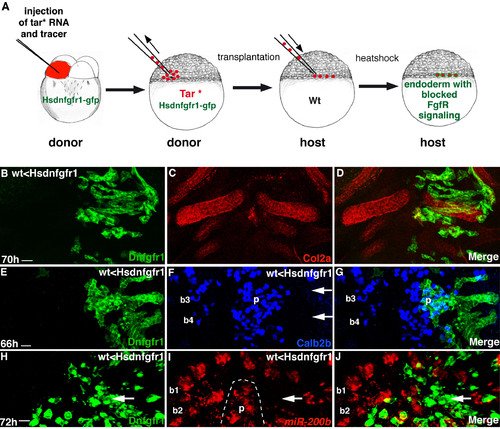Fig. S4
- ID
- ZDB-FIG-110804-21
- Publication
- Kapsimali et al., 2011 - Fgf signaling controls pharyngeal taste bud formation through miR-200 and Delta-Notch activity
- Other Figures
- All Figure Page
- Back to All Figure Page
|
Fgf signaling is necessary within the pharyngeal endoderm for the formation of Calb2b+ and miR-200-expressing cells. (A) The experimental targeting of Fgfr blockage to endoderm. (B-J) Rostral towards the top. Confocal projections of ventral views of grafted endodermal (Tar*) cells in a wild-type embryo expressing Dnfgfr1 after heatshock. (B-D) Col2a expression in the cartilage (red) is comparable between control and Hsdnfgfr1-expressing (green) side. (E-G) An example of severe reduction of Calb2b expression in the Hsdnfgfr1-expressing (green) epithelium of branchial arches 3 and 4. (H-J) A smaller magnification of the graft showed in Fig. 3P-R, including the pharyngeal epithelial side (b1, b2, on the left) that is devoid of Dnfgfr1 expression. miR-200b expression is present in the b2 side without Dnfgfr1 expression but is severely reduced in the Dnfgfr1+ side (green). p, palate. |

